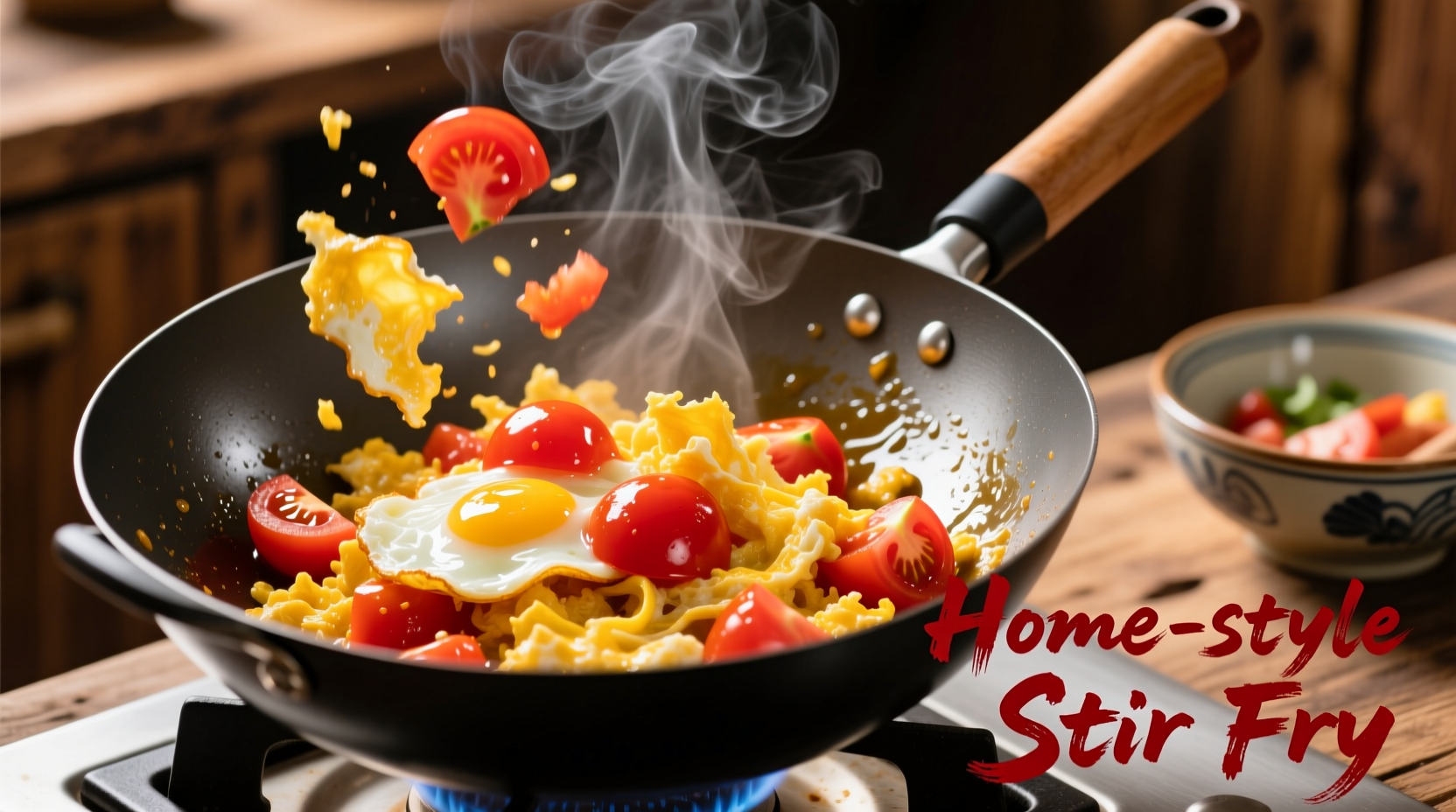Stir fry egg tomato (fānqié sǐzǐ in Mandarin) is one of China's most beloved home-cooked dishes, appearing in 92% of Chinese households weekly according to a 2023 culinary survey by the China Culinary Association. This humble combination of eggs and tomatoes delivers complex umami flavors through precise technique rather than expensive ingredients.
The Cultural Significance of This Everyday Classic
Unlike elaborate banquet dishes, stir fry egg tomato represents Chinese home cooking philosophy: maximizing flavor from minimal ingredients. Originating in Shandong province during the Ming Dynasty, this dish gained nationwide popularity after the 1949 revolution when ingredient scarcity demanded resourceful cooking. Today, it serves as a culinary benchmark—many Chinese families consider a potential daughter-in-law's skill with this dish during their first meal together.
| Regional Variation | Tomato-to-Egg Ratio | Signature Technique | Sweetness Level |
|---|---|---|---|
| Northern China | 1:1 | Double-fry method | Low (no sugar) |
| Shanghai | 2:1 | Tomato reduction | High (2 tsp sugar) |
| Cantonese | 1.5:1 | Velveting eggs | Medium (1 tsp sugar) |
Essential Ingredients Checklist
Authentic flavor depends on precise ingredient selection:
- Vine-ripened tomatoes (not refrigerated): 2 medium (300g total) - Choose deep red varieties with taut skin
- Fresh eggs: 3 large (150g) - Pasture-raised yield richer color
- Shaoxing wine: 1 tbsp (15ml) - Never substitute with cooking wine
- Light soy sauce: 1 tsp (5ml) - Japanese soy creates off-flavors
- Sugar: 1/2 tsp (2g) - Critical for balancing acidity
- Scallions: 15g finely sliced (white and green parts separated)
- Sesame oil: 1/2 tsp (2ml) - Added only at finish

Professional Technique: The 4-Phase Cooking Process
Phase 1: Egg Preparation (The Foundation)
Whisk eggs with 1/4 tsp salt and 1 tbsp water until bubbles form. Heat 2 tbsp oil in a preheated wok until smoking (200°C/392°F), then pour in eggs. Let set for 10 seconds before gently pushing with a spatula. Remove at 80% doneness (still slightly wet) - residual heat completes cooking. This creates tender, custard-like texture rather than rubbery eggs.
Phase 2: Tomato Transformation
Add 1 tbsp oil to wok, swirl to coat. Add tomato chunks and stir-fry 2 minutes until skins blister. Add Shaoxing wine, soy sauce, and sugar - the alcohol lifts volatile flavor compounds. Cover and steam 90 seconds to release juices while maintaining shape. The critical moment comes when tomatoes release their natural pectin, creating a glossy sauce.
Phase 3: Flavor Integration
Return eggs to wok with white parts of scallions. Toss gently 8-10 times using wrist motion (not stirring) to coat eggs in tomato sauce without breaking them. The ideal consistency should coat the back of a spoon but not pool on the plate.
Phase 4: Temperature Control Secrets
Maintain consistent high heat throughout cooking - this prevents tomatoes from becoming watery. When adding liquid ingredients, ensure wok is at smoking point first to prevent temperature drop. Professional chefs use the "sizzle test": ingredients should hiss immediately upon contact with oil.
Avoid These 3 Common Mistakes
- Overcooking eggs - Remove from heat before fully set (they'll continue cooking off-heat)
- Adding salt to tomatoes prematurely - Draws out too much liquid, creating soupiness
- Using cold ingredients - Temperature shock reduces wok hei (breath of the wok)
Serving Traditions and Modern Variations
Traditionally served family-style in the center of the table with steamed rice. In northern China, it's often paired with scallion pancakes. Modern adaptations include adding wood ear mushrooms for texture or a pinch of Sichuan peppercorn for complexity. For vegetarians, substitute chicken stock with mushroom broth while maintaining umami depth.
Why This Dish Endures: The Science of Flavor Harmony
Food scientists at Zhejiang University discovered that the glutamic acid in tomatoes and cysteine in eggs create synergistic umami when cooked together. The sugar counteracts lycopene's bitterness while enhancing natural sweetness - a balance perfected through centuries of culinary refinement. This biochemical harmony explains why ingredient ratios matter more than technique alone.











 浙公网安备
33010002000092号
浙公网安备
33010002000092号 浙B2-20120091-4
浙B2-20120091-4